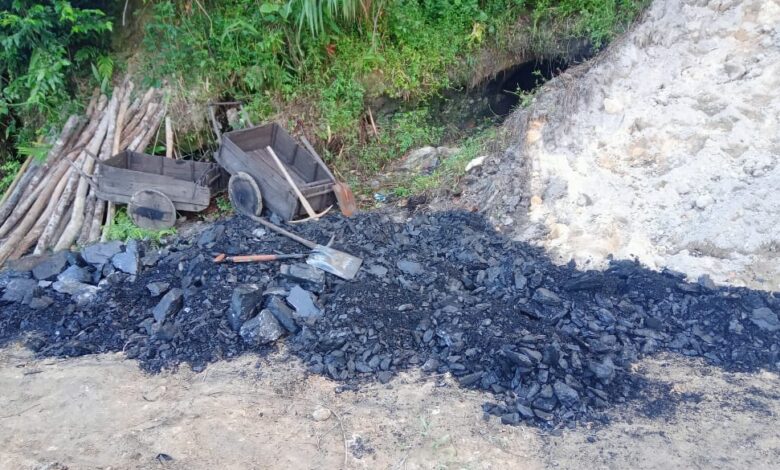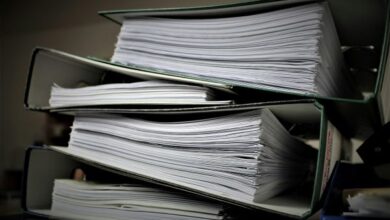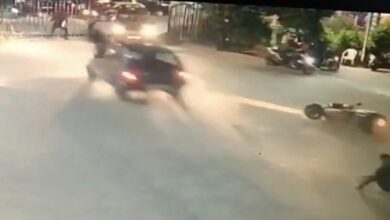Tech solution to illegal mining
How Meghalaya can eradicate the recurring problem using US strategies from Osama bin Laden operation

 The Government of Meghalaya can harness technology like how the US employed advanced systems to track and eliminate Osama bin Laden, particularly in intelligence gathering, aerial surveillance, electronic monitoring and rapid data processing.
The Government of Meghalaya can harness technology like how the US employed advanced systems to track and eliminate Osama bin Laden, particularly in intelligence gathering, aerial surveillance, electronic monitoring and rapid data processing.
Drone technology, as recommended by the court-appointed committee, can serve as a vital tool for mapping, monitoring and detecting illegal coal mining activities in difficult terrains.
High-resolution drones, equipped with infrared and multispectral imaging, can provide real-time data on mining sites, track movement and identify unauthorised extraction and transportation of coal.
Similar to the US military’s use of stealth drones for reconnaissance, the Meghalaya police can deploy drones with night vision and long-endurance capabilities to operate in low-visibility conditions, ensuring continuous surveillance without direct human intervention.
Satellite imagery, akin to what was used by the US intelligence agencies for tracking bin Laden, can complement drone surveillance by providing an overarching view of mining hotspots over time. The end-to-end remote sensing and geospatial solutions and commercial satellite services can help identify changes in land patterns, new excavation sites, and illegal storage locations.
Geospatial intelligence, combined with Artificial Intelligence (AI), can analyse historical and real-time data to detect patterns indicative of illegal activities, thereby enabling predictive policing.
Additionally, electronic warfare techniques such as signal intelligence and communication jamming — used by the US to neutralise terrorist threats — can be adapted to track unauthorised radio or mobile communications linked to illegal coal transportation networks.
The deployment of biometric identification and forensic analysis, similar to the methods used for verifying bin Laden’s identity, can be crucial in tracking individuals involved in illicit mining.
Police forces can employ mobile biometric devices like the Secure Electronic Enrolment Kit (SEEK II) to capture fingerprints, facial recognition data, and iris scans of suspected offenders and cross-check them against government databases.
Advanced forensic tools can be used to test samples of seized coal and link them to specific illegal mines, aiding in the prosecution of offenders — even if they are from the Main Civil Secretariat and the Additional Civil Secretariat at Shillong.
Secure, real-time communication networks, modelled after the US military’s use of encrypted satellite communication, can improve coordination between law enforcement agencies, government officials, and monitoring teams.
The integration of Geographic Information System (GIS) mapping, GPS tracking and AI-powered analytics can enhance operational efficiency, ensuring swift intervention when illegal mining is detected. A centralized control room, linked to surveillance drones and equipped with AI-powered monitoring systems, can function as a command centre, much like the real-time coordination hub used by US forces in Operation Neptune Spear.
Further, cyber and electronic warfare strategies can be employed to disrupt illegal mining networks. Law enforcement agencies can use cyber intelligence to monitor online transactions, social media communications, and financial trails linked to coal syndicates.
The use of AI-powered data mining tools can help trace suspicious financial transactions that fund illegal mining operations, thereby allowing authorities to dismantle the entire network.
By strategically integrating drone surveillance, satellite monitoring, AI-driven analytics, biometric identification, and cyber intelligence, the state government can create a highly efficient and technology-driven enforcement mechanism.
The lessons from the US operation against bin Laden illustrate the importance of leveraging multiple technological tools in a coordinated manner, ensuring that illegal mining is systematically identified, disrupted and ultimately eradicated.
(Views are personal)





